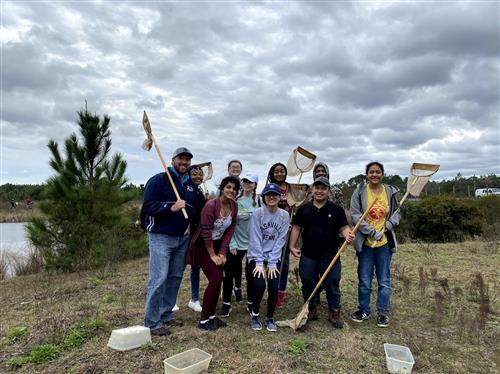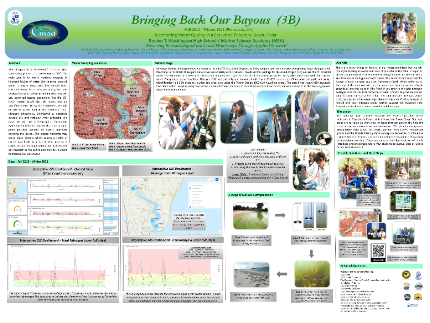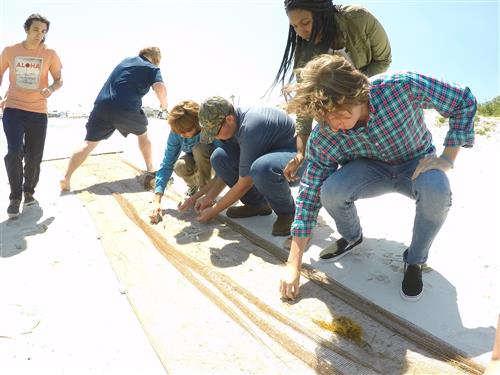- Washington High School
- Marine Science
Marine Science Academy
-
GIS Dashboard Data - Tutorial on How to Read the Dashboard
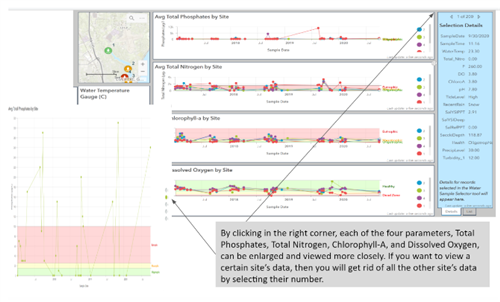
-
Avg Total Nitrogen by SITE
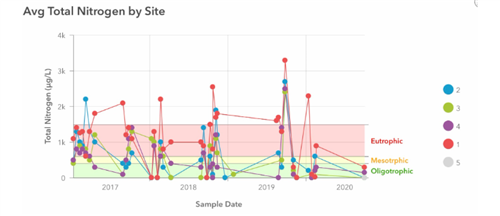
-
Avg Total Phosphates by SITE
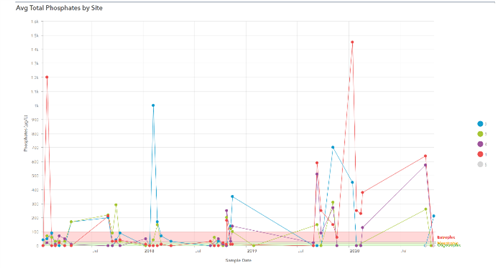
-
Avg Chlorophyll-a by SITE
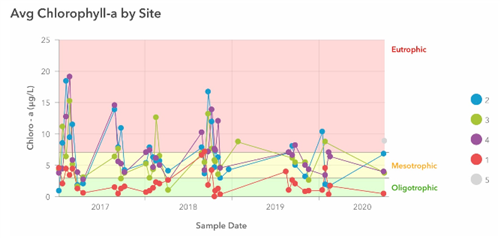
-
Avg Cissolved Oxygen by SITE
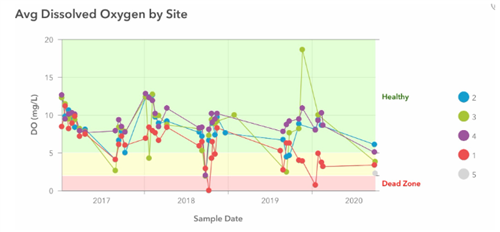
-
Diversity & Abundance Data
SITE 1 BAYVIEW PARK
SITE 2 PROJECT GREENSHORES
SITE 3 SANDERS BEACH
SITE 4 MORGAN PARK
-
DIVERSITY & ABUNDANCE DATA
Click here: 2020 Diversity & Abundance Storymap
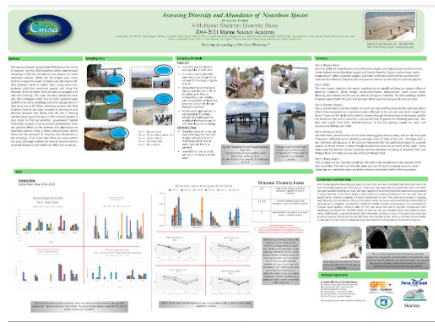
DIVERSITY AND ABUNDANCE OF NEAR SHORE SPECIES: A SHANNON DIVERSITY STUDY
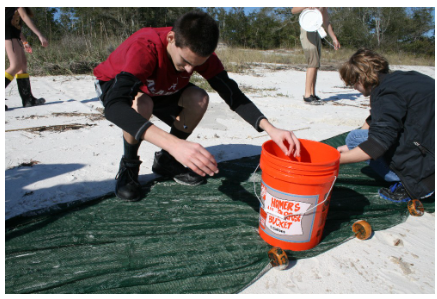
The objective of Diversity and Abundance Study is to assess the number and varieties of various juvenile near shore species at selected locations; the locations we sample are Bayou Texar, Project Greenshores, Sanders Beach, and Morgan Park. By assessing the diversity and abundance of these areas, it helps determine how healthy the body of water is and answer questions like: "Are multimillion dollar restoration projects like Project Greenshores effective at returning diversity and abundance to those areas ?"
-
MSA AT BTWHS
The Marine Science Academy at B. T. Washington High School is an academy designed for academically talented students who have a strong interest in pursuing careers in the Marine Sciences, Coastal Ecology or related fields. Students in the Marine Science Academy will have an intensive curriculum which will include immersion in scientific processes including laboratory experimentation, research, and field study. Student Scientists will work hand in hand with UWF, the DEP, and Seagrant Scientists on community projects: “Bringing Back the Bayous” and “Diversity and Abundance of Nearshore Species”. The high school experience for the MSA students will culminate with Advanced Placement or Dual Enrollment in a selected science.
-
Research Projects
TEAM OSPREY
Research project: Living Shoreline
- Captain: Kelsey Bolling
- Caitlyn Cameron
- Callie Freyhofer
- Harrison Garcia
- Kelly Cameron
Team Osprey is heading up the 7th year of the living shoreline project. We will be working with the Florida Department of Environment Protection (FLDEP) propagating shoreline grasses in our wildcat garden. Installation of these shoreline grasses is planned for the spring. The purpose of this project is to strengthen and protect our shorelines by preventing erosion, promoting nutrient uptake and providing a home for juvenile species.
TEAM SHARK FIN
Research project: Lionfish
- Captain: Lindsey Wilbur
- Emma Wilmoth
- Micah Eckard
- Matthew Quadrini
- Hayden Lett
Team Shark Fin´s research project is “Lionfish Feeding Preference”. Lionfish are native to coral reefs in the tropical waters of the South Pacific and Indian Oceans, but are an invasive species to the Gulf of Mexico and Atlantic coast as far north as North Carolina. This multi-year project seeks to determine the niche of the invasive lionfish. We would like to ascertain the feeding preference of the lionfish. To accomplish that we are going to investigate the gut contents and perform DNA analysis on the stomach contents to see what these fish are eating out in the wild!
TEAM GLAUCUS ATLANTICUS
Research project: Aquaponics
- Captain: Makayla Quibodeaux
- Piper Dunn
- Andrew Manley
- Dawson Tate
- Jackson Travis
This year, Team Glaucus´s team research project is Aquaponics. Our objective is to assess if utilizing fish waste instead of ordinary soil improves the flavor, growth rate, and overall appearance of the plants we produce; strawberries, kale, and mint leaves will be planted. Koi Fish waste shall provide nutrients for the plants and there will be a constant exchange of water and nutrients between the plants and the fish.
TEAM WAVE
Research project: Microplastics
- Captain: Collin Andrew
- Leah King
- Tobi White
- Logan Haymon
Team Wave is taking over a multi-year microplastics project. Microplastics are the result of broken-down plastic waste. Plastics never degrade fully in the environment. Species can ingest microplastics, causing a negative impact on them. The main goal of this project is to ascertain the amount of microplastics through seasonal changes in Perdido Bay.
- Captain: Kelsey Bolling


